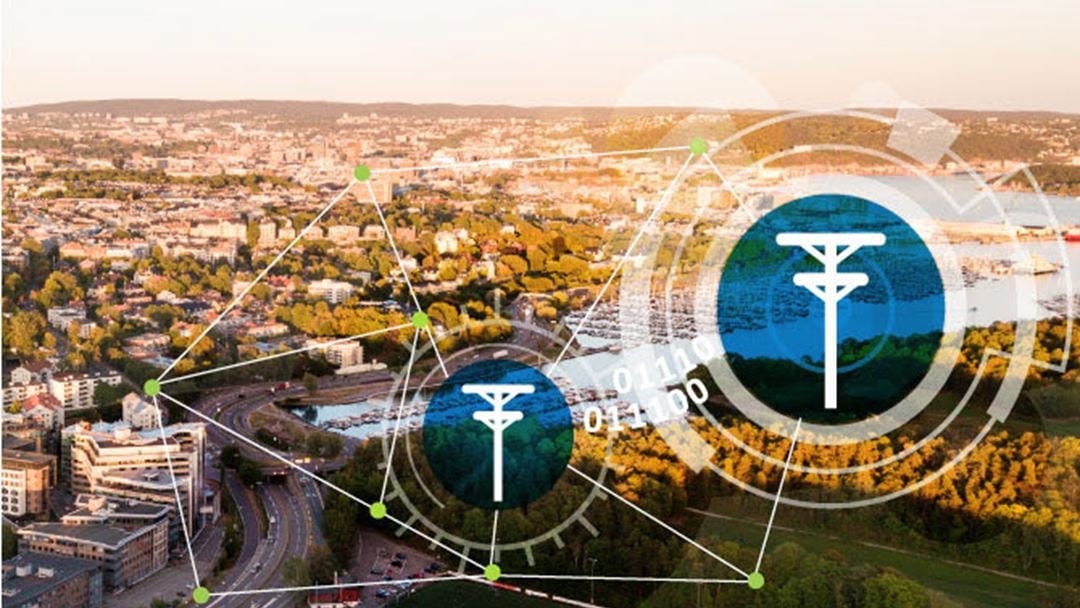Cybersecurity in smart grids
Results:
- A Light-Weight Tool-Supported Method for Cyber Risk Assessment in the Planning of Cyber-Physical Smart Grids
- Cyber-risk assessment method for the planning phase of cyber-physical smart grids
- Infrastructure-as-Code SmartGrid lab
Smart grid development and asset management
CINELDI's Knowledge base
The electricity grid is undergoing a digital transition to become intelligent, robust and cost-efficient. Unknown dynamics and causal relationships, interdisciplinarity and mutual dependencies are keywords that relate to this digital transition. It is therefore important to seek to understand the associated threats and vulnerabilities related to this development with the aim of improved control over these risks.
An example of digitalization in the grid is the integration of grid topology monitoring and data-driven decision support systems with the remote control of breakers in the grid. Although this scenario is still a few years away, SCADA systems are increasingly being interconnected with other systems, such as distribution management systems, geographical information systems, network information systems and systems for customer relationship management. All these system integrations require secure communication technology, protecting them against attacks from malicious actors that may result in unauthorized information disclosure or disruption of the security of supply.
Cybersecurity risks become problematic if handled incorrectly, and preliminary results indicate that they must be dealt with already from the distribution grid planning stage [1]. CINELDI is currently working on how to include a high-level cyber-security assessment as part of the grid planning process. .Cybersecurity has been researched through methodology development for identifying and modeling cybersecurity threats and risks [2, 3, 4], vulnerability analysis framework [5] and analyzing various aspects of integrating 5G communication with the smart grid [6]. Although the IEC 61850 standard defines communication protocols for grid assets such as electrical substations, it does not properly address cybersecurity issues. CINELDI developed an integrity check mechanism for this application, without adding time delay [7]. Functionality of 5G technology has potential for enabling secure IoT (Internet of Things) in the smart grid [8], such as network slicing [9]. Software-defined networking (SDN) was also used in an application to demonstrate the potential of SDN security components in 5G [10], [11].
Selected publications from CINELDI:
- K. Bernsmed, M. G. Jaatun, and C. Frøystad, “Is a Smarter Grid Also Riskier?”, in Security and Trust Management, vol. 11738, S. Mauw and M. Conti, Eds. Cham: Springer International Publishing, 2019, pp. 36–52. doi: 10.1007/978-3-030-31511-5_3.
- L. H. Flå, R. Borgaonkar, I. A. Tøndel, and M. Gilje Jaatun, “Tool-assisted Threat Modeling for Smart Grid Cyber Security", in 2021 International Conference on Cyber Situational Awareness, Data Analytics and Assessment (CyberSA), Jun. 2021, pp. 1–8. doi: 10.1109/CyberSA52016.2021.9478258.
- A. Omerovic, H. Vefsnmo, G. Erdogan, O. Gjerde, E. Gramme, and S. Simonsen, “A Feasibility Study of a Method for Identification and Modelling of Cybersecurity Risks in the Context of Smart Power Grids”, in Proceedings of the 4th International Conference on Complexity, Future Information Systems and Risk, Heraklion, Crete, Greece, 2019, pp. 39–51. doi: 10.5220/0007697800390051.
- A. Omerovic, H. Vefsnmo, O. Gjerde, S. T. Ravndal, and A. Kvinnesland, “An Industrial Trial of an Approach to Identification and Modelling of Cybersecurity Risks in the Context of Digital Secondary Substations”, in Risks and Security of Internet and Systems, vol. 12026, S. Kallel, F. Cuppens, N. Cuppens-Boulahia, and A. Hadj Kacem, Eds. Cham: Springer International Publishing, 2020, pp. 17–33. doi: 10.1007/978-3-030-41568-6_2.
- I. A. Tøndel, H. Vefsnmo, O. Gjerde, F. Johannessen, and C. Frøystad, “Hunting Dependencies: Using Bow-Tie for Combined Analysis of Power and Cyber Security”, in 2020 2nd International Conference on Societal Automation (SA), Funchal, Portugal, May 2021, pp. 1–8. doi: 10.1109/SA51175.2021.9507185.
- R. Borgaonkar, I. Anne Tøndel, M. Zenebe Degefa, and M. Gilje Jaatun, “Improving smart grid security through 5G enabled IoT and edge computing", Concurrency Computat Pract Exper, vol. 33, no. 18, Sep. 2021, doi: 10.1002/cpe.6466.
- R. Gudmestad, S. H. Houmb, and M. G. Jaatun, “Saving Nine Without Stitching in Time: Integrity Check After-the-fact”, in 2020 2nd International Conference on Societal Automation (SA), Funchal, Portugal, May 2021, pp. 1–8. doi: 10.1109/SA51175.2021.9507115.
- R. Borgaonkar and M. G. Jaatun, “5G as an Enabler for Secure IoT in the Smart Grid : Invited Paper”, in 2019 First International Conference on Societal Automation (SA), Sep. 2019, pp. 1–7. doi: 10.1109/SA47457.2019.8938064.
- H. V. K. Mendis, P. E. Heegaard, and K. Kralevska, "5G Network Slicing as an Enabler for Smart Distribution Grid Operations", AIM, 2019. doi: 10.34890/881.
- M. K. Forland, K. Kralevska, M. Garau, and D. Gligoroski, “Preventing DDoS with SDN in 5G”, in 2019 IEEE Globecom Workshops (GC Wkshps), Dec. 2019, pp. 1–7. doi: 10.1109/GCWkshps45667.2019.9024497.
- K. Kralevska, M. Garau, M. Førland, and D. Gligoroski, “Towards 5G Intrusion Detection Scenarios with OMNeT++", in EPiC Series in Computing, Dec. 2019, vol. 66, pp. 44–51. doi: 10.29007/2jg6.

